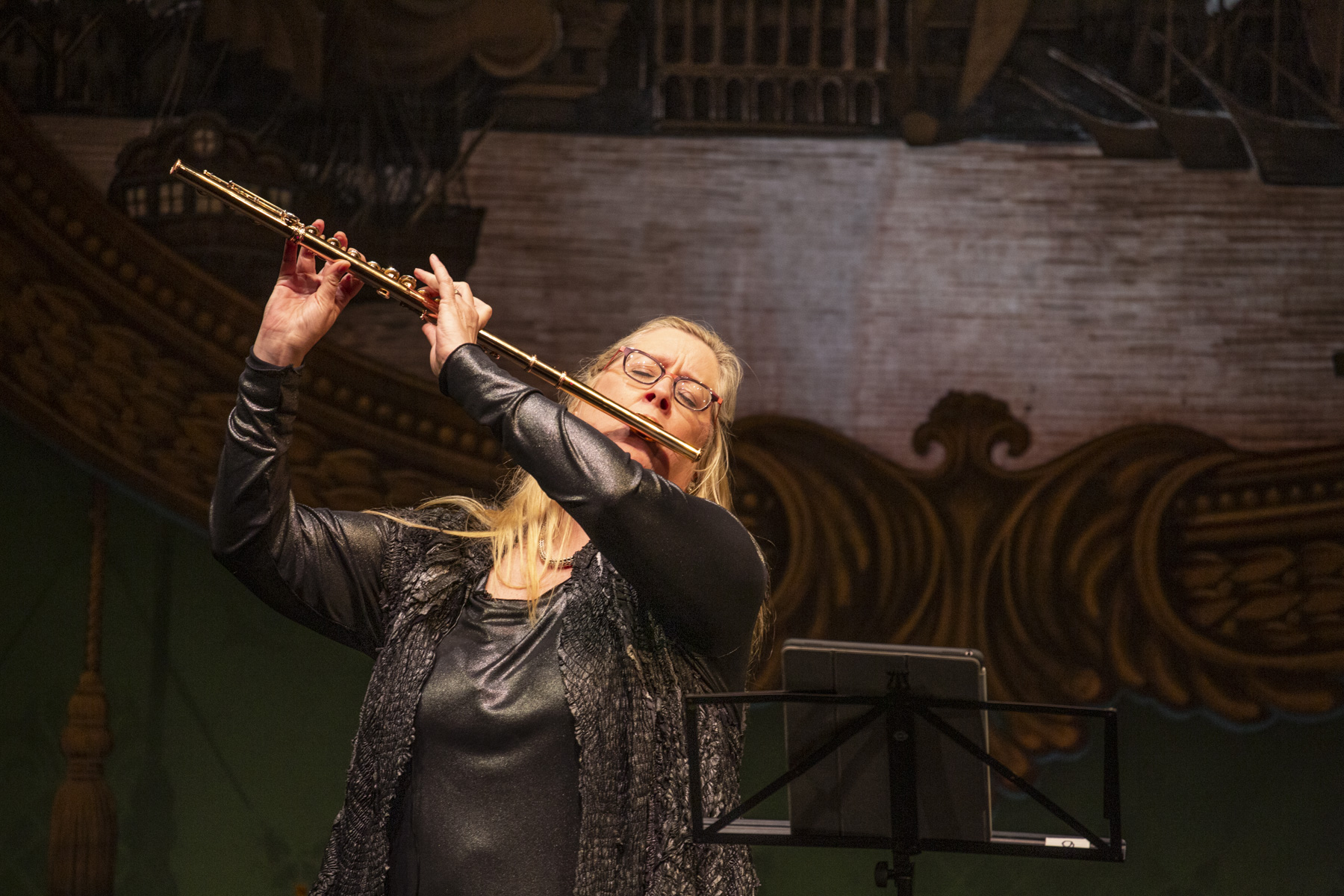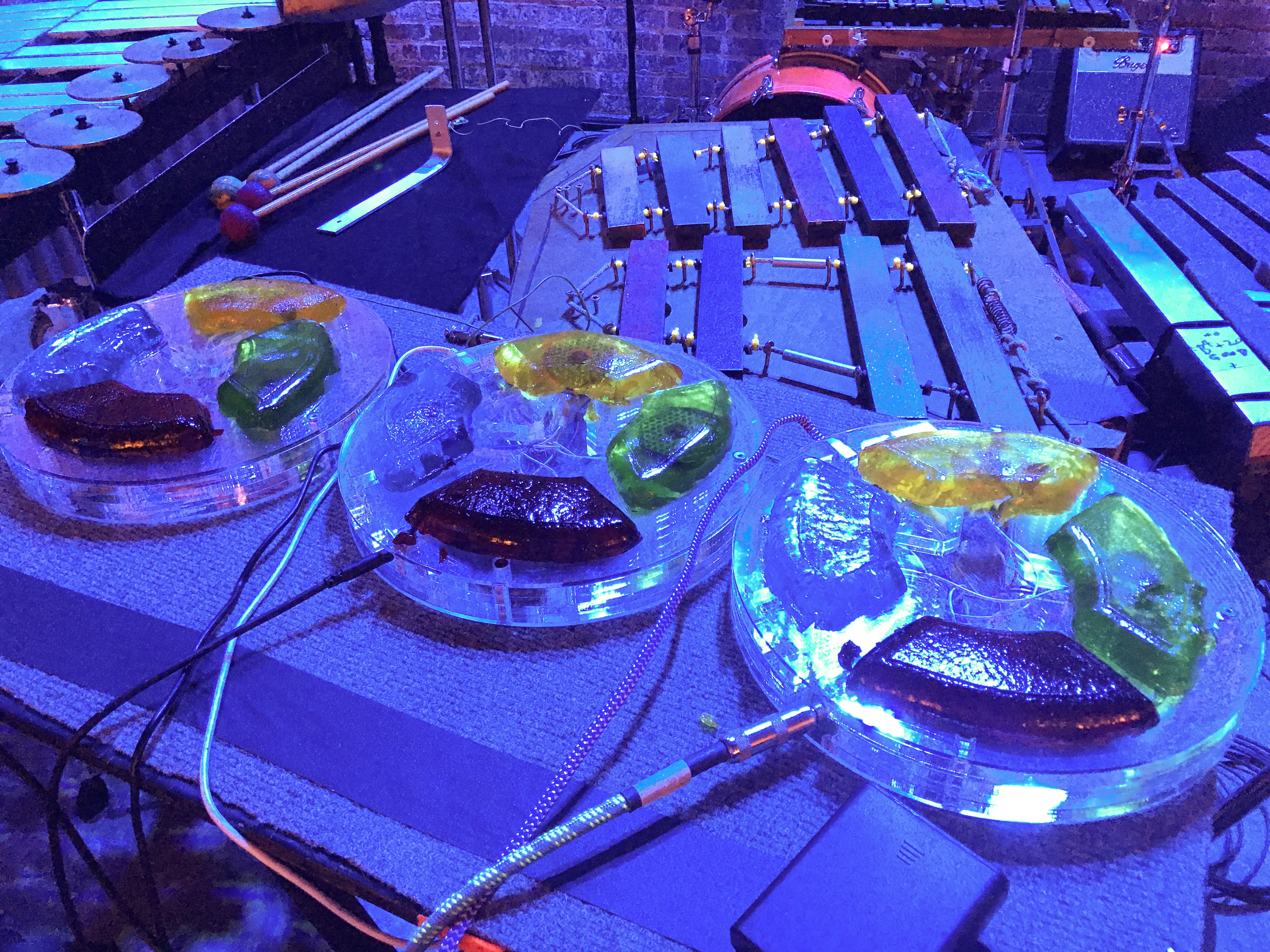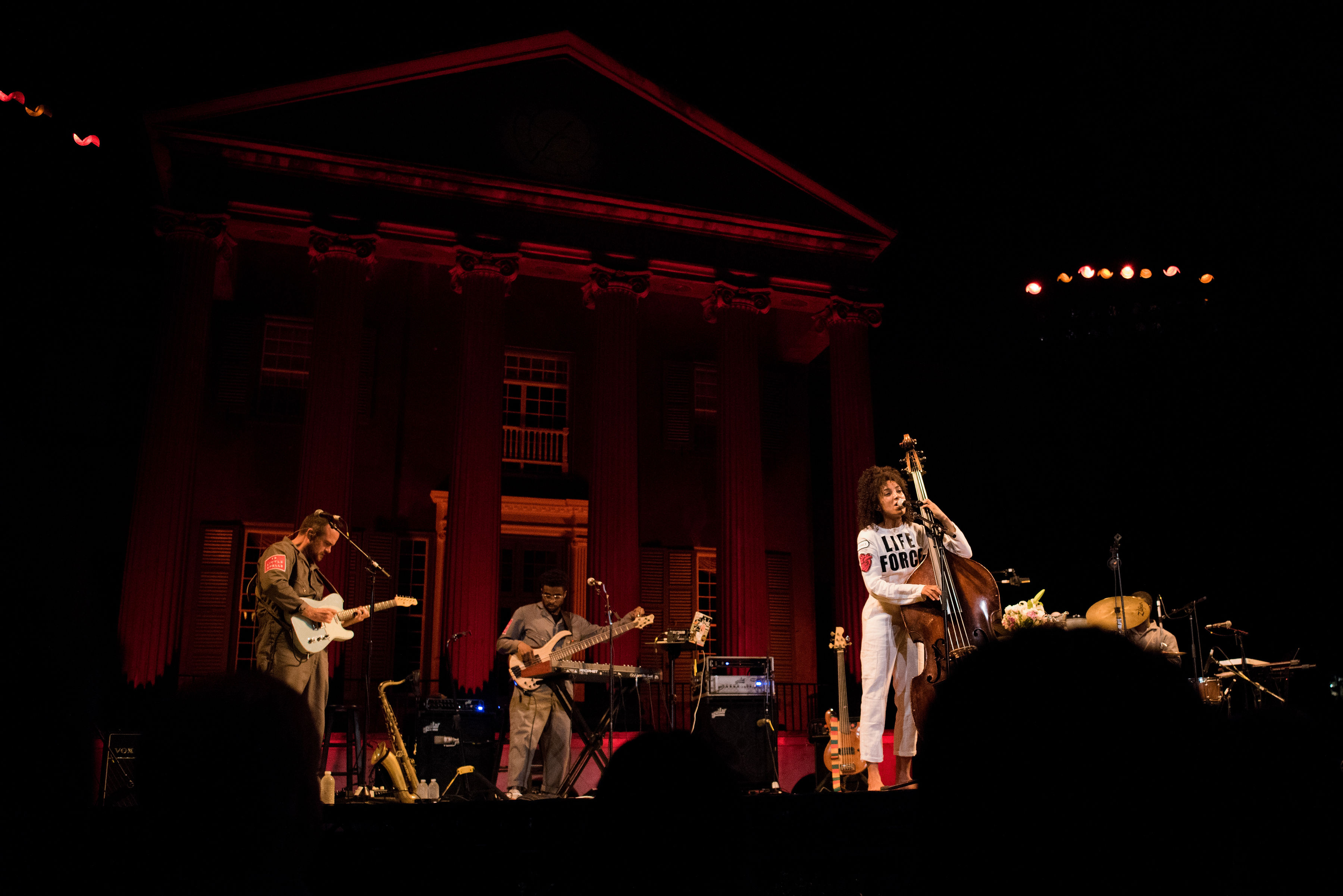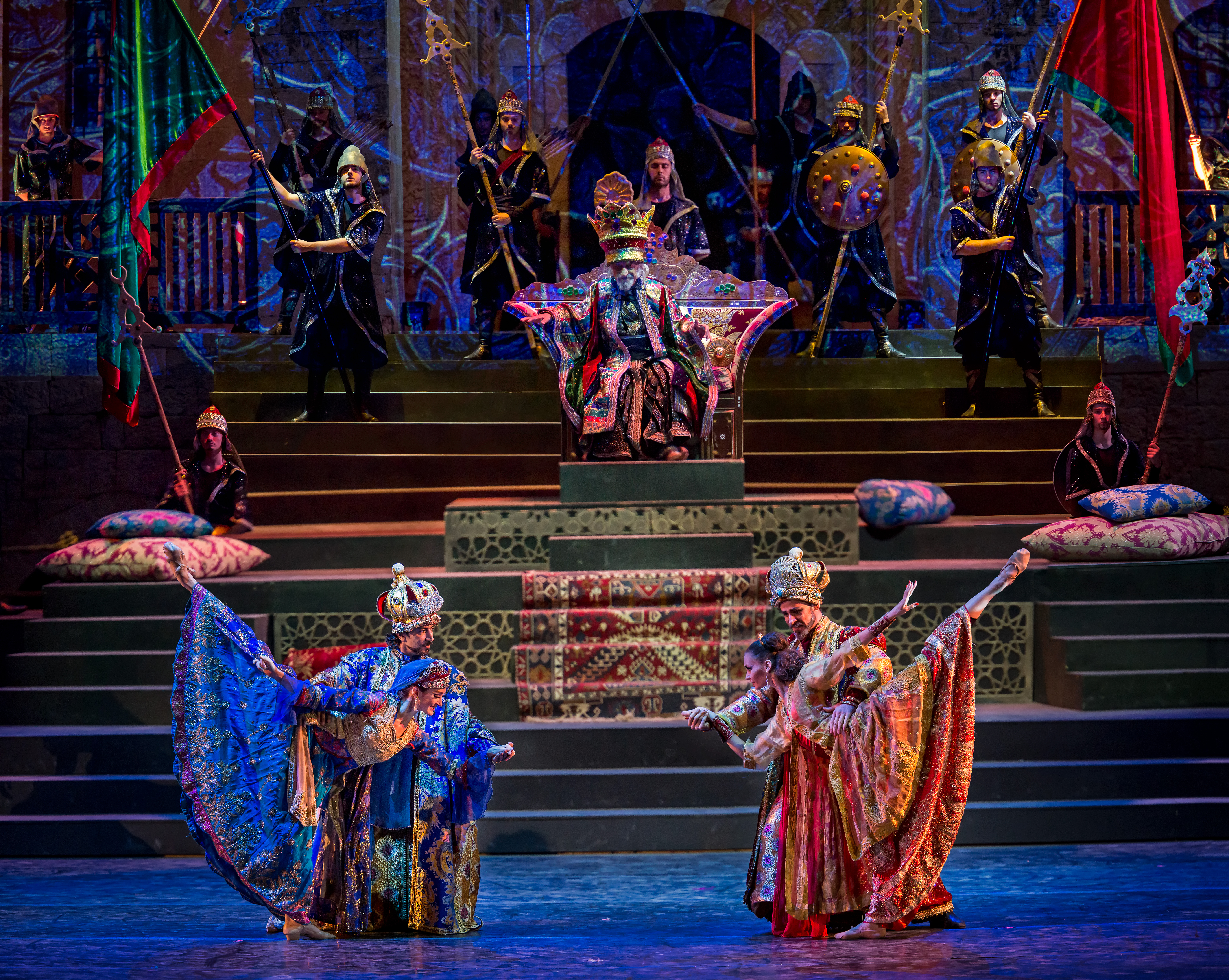Review: Spoleto Festival USA in Charleston, SC
By Perry Tannenbaum

Hold your horses! That was the directive that went out to operators of horse-driven carriages that usually swing Memorial Day tourists around Charleston during Spoleto Festival USA. It takes readings of 95º or higher for tourism officials to order the drivers and their carriages back to their stables. During this year’s festival, the mercury hit that mark on the first Saturday and eclipsed that high for five consecutive days afterwards. On Memorial Day – and the next day– official highs hit 100º, the first times that plateau had ever been reached during the month of May.
Naturally, the heatwave was the hottest topic among concert audiences and operagoers during the first week of Spoleto. The sensational – or sensationalized – new production of Richard Strauss’s Salome was a distant second in generating buzz, while the proliferation of new music at all of Spoleto’s music venues hardly generated a peep.
You could say that grumblings about new music had receded because new opera at Spoleto had retreated. Although the directing team of Patrice Caurier and Moshe Leiser, rethinking their 1987 approach to Salome, had made their modernized version steamy enough to rival the weather, it stood alone. There were no new operas at the festival, such as last season’s Tree of Codes or Quartett from the year before, both given their American premieres. Nor were there any exciting excavations like the past two seasons’, when we saw Donizetti’s Pia de’ Tolomei and Vivaldi’s Farnace in American premieres.

On the other hand, you could also say that orchestral director John Kennedy, Westminster Choir leader Joe Miller, and chamber music director Geoff Nuttall have opened the gates to new music to such a degree that it now permeates Spoleto’s classical programming. At Dock Street Theatre, the chamber music venue dripping with antiquity, I don’t recall an after-concert buzz that quite equaled what I heard when Karen Gomyo made her festival debut. On the heels of a gorgeous Bach sonata from flutist Tara Helen O’Connor and an exhilarating Concerto for Two Celli by Vivaldi, featuring cellists Joshua Roman and Christopher Costanza, Gomyo gave an electrifying account of Sarasate’s “Carmen Fantasy” that left me trembling.

That performance seemed the obvious choice when I reached the outdoor courtyard, probably no warmer than 98º, and I overheard one guy asking his lady which piece she had liked best. After a couple of seconds of reflection, she answered, “I think I preferred the quartet!” That piece was When the Night for Cello Quartet by composer-in-residence Paul Wiancko, with Roman, Costanza, the composer, and Nina Lee in her Spoleto debut. Introducing the piece, Nuttall outed Lee as the musician who had asked Wiancko where his title had come from. Then he had Wiancko play the bass intro to Ben E. King’s “Stand by Me” and, to complete Lee’s hazing, asked everybody who knew the first three words to sing them. We were fairly loud responding to our cue. Twice.
Like Charles Wadsworth before him, Nuttall feels no compulsion to solemnly match the mood of his intros to the music that will follow. So it’s typical of his hosting style that, while pranking the newbie, Nuttall also let us know that the three movements of When the Night would be ethereal and serene.
Wiancko’s previous pieces had been more multicolored in mood and instrumentation. Closed Universe, written in the wake of the 2016 election, pondered the dark days to come with Costanza tilting the instrumental makeup of a piano quartet toward his solo cello. The composer added another intriguing twist, playing a second cello and a glockenspiel, which chimed in to signify the glimmers of hope he felt amid the gloom. On Program III, oboist James Austin Smith and the St. Lawrence String Quartet premiered Wiancko’s newest piece, Faults. It was also the brightest of the works played during the composer’s residency, with abrupt shifts between lyrical beauty and discordant chaos – with a little mischief tossed in. Smith seemed to be having fun on the bumpy terrain, particularly late in the piece when he and St. Lawrence violist Lesley Robertson performed a clapping accompaniment for the other players. Playing first violin with his quartet, Nuttall was so gleeful that he seemed like a kid.
In the more traditional repertoire, Nuttall was playing with more fire and flair than we had seen from him since he took over as chamber music director after the 2009 festival. Following on the heels of Closed Universe in Program I, Nuttall absolutely scorched the first violin part of Ernst von Dohnányi’s Piano Quintet, smiling as he burned with pianist Stephen Prutsman and the St. Lawrence. Nuttall and the St. Lawrence also played the coveted finale spot – with its guaranteed standing O – in Program II, Haydn’s “Emperor” Quartet, after the violinist’s alert that the “Deutschland über alles” melody was upcoming in the quiet second movement.
If we can accept that Ben E. King would go on to upstage Carmen, then I’m emboldened to proclaim that Prutsman turned the St. Lawrence’s heroics with Haydn into something of an anticlimax in his rendition of Beethoven’s “Moonlight” Sonata. Nuttall’s intro stressed the range of emotions we were about to experience, warning the Dock Street audience that the opening Adagio sostenuto might bring them to tears. My tears actually welled up in the closing Presto agitato, one of my favorite piano pieces, for I’d never heard it played live with such white-hot ferocity and fury.
As far as audience favor that afternoon, that may have been secured by the chunk of Ovid’s Metamorphoses that bassist-composer Doug Balliett so charmingly modernized in his Echo and Narcissus, with countertenor Anthony Roth Costanzo singing both of the title roles and the composer narrating. Prutsman was literally upstaged in Program IV when he performed a rollicking film score for piano quintet – with Nuttall doubling on a cheesy toy trumpet – that he composed for Buster Keaton’s 1927 silent film, College. At the start of the concert, Nuttall promised that anybody who didn’t laugh hard at least once could ask for his or her money back at the end of the show. Projected on a fairly wide screen while the musicians played off to the side, Keaton’s antics prevailed. Even if I hadn’t been comped, I couldn’t have collected.
Prutsman also had a salutary impact on Kennedy’s more militantly modern Music in Time series, which split its four concerts between the funky Woolfe Street Playhouse, with its Bohemian cocktail tables and faux candles, and the Simons Center Recital Hall with its clean-room sterility. Looking very much at ease at Woolfe Street, Prutsman introduced his 30: An American Kaleidoscope and left the performing to a string quartet comprised of four Spoleto Festival USA Orchestra members – except for the pre-recorded soundtrack that the composer provided for accompaniment. The idea was to simulate a road trip across the US, the quartet acting as the riders and Prutsman’s audio imitating the sound of a car radio as the travelers sped in and out of the wavelength of stations that they passed. Sped might be an understatement, since Prutsman claimed to have condensed snips of some 400 songs into his soundtrack, far more than he stole for his feature-length College score.
Kaleidoscope was somewhat unique in the “Rebellion in Greenery” concert, since Britta Byström’s title piece, Pauline Oliveros’ From Unknown Silences, and Anna Thorvaldsdottir’s Ró were all more tranquil nature studies, not speedy at all. Ró was easily the most exotic, with bass flute and bass clarinet included in the texture, and punctuations on the piano that included hitting the strings with a mallet. Percussionist Ye Young Yoon had even more outré assignments: rubbing a drum with a disc, bowing a vibraphone, applying a crumpled piece of paper to gong, and simply crumpling a second piece of paper! Except when Yoon banged the bass drum, the music hardly rose above a whisper, mesmerizing.

Dedicated to bringing rock instrumentation to new – and old – classical music, The Living Earth Show was more rowdy, raucous, and crowdpleasing in their second Spoleto appearance. Both members of this Left Coast duo, stoked percussionist Andy Meyerson and slightly mellow guitarist Travis Andrews, took turns personably introducing their repertoire along with one or two of the many instruments that littered the stage. By far the most unusual of these was the electric percussion instrument Myerson played with mallets during Dennis Aman’s Prelude #5/Fugue #4, based on Bach. It seemed to be fashioned from three plastic disks, about the size of an old studio tape reel, each of which sported four blobs of primary colored Jell-O – lemon, lime, blueberry, and cherry – sufficiently solidified so they wouldn’t splatter.
Living Earth’s exploration of what is possible was fun. Before Nicole Lizée’s Family Sing-A-Long and Game Night, I’d never seen anybody bowing a guitar, and before Raven Chacon’s Tributary, I’d never contemplated the musical possibilities of smashing a drinking glass into a bucket and mucking around with the broken shards. Also memorable was Sarah Hennies’ update of Bolero, emphasizing the snare drum tattoo until the piece dissolved into a percussion orgy.
As opposed to the more retro and conservative music performed at Woolfe Street, mostly by female composers, the slate at Simons was strictly modern, often minimalistic, and exclusively male-composed. In the “Stay on It” concert, the title piece by Julius Eastman was preceded by two more recent works by Steve Reich, Pulse and Runner. Before conducting, Kennedy prefaced the Reich works, comparing Pulse (2015), in particular with the late symphonies of Haydn for its clarity. A bit of a stretch, I thought when the piece was done, so the whoops of enthusiasm that welled up from the audience took me a little aback. Patches of fanatical support enlivened the entire Music in Time series.
Written for two orchestras, each deployed to one side of the stage, Runner (2016) struck me as livelier and more engaging, but the Eastman piece, exhumed from 1973, had the most color and chaos, with stretches of jungle riot and jazz. Soprano saxophonist Jeffrey Siegfried led the ensemble, playing with and without his mouthpiece and reed, contributing the elephant roar to Eastman’s sonic Africa.
After my Spotify preview, I had somewhat dreaded staying an extra day for Georg Friedrich Haas’s in vain (2000), but Kennedy hinted that seeing the work staged would add an extra dimension, and he was right. Aside from its tuning complexities, this apocalyptic work, over an hour in length, was written to be played through two extended periods of total darkness. Not only did the 24 musicians from the Spoleto Orchestra need to memorize long stretches of their parts, they needed to play them together without Kennedy’s direction, shifting dynamics and tempos by listening to each other.
I found myself getting more accustomed to the gloom during the second episode of darkness, able to see Kennedy’s motionless silhouette – and also able to more keenly perceive the musicians’ striving for unity and community. Their struggles were all the more poignant when brief flashes of light pierced the darkness without providing any help.

Kennedy was one of five conductors at the podium for Spoleto’s larger musical productions. After serving as assistant director for the 2017 production of Eugene Onegin, Michelle Rofrano made her formal debut conducting a groundbreaking Classical Showcase concert that brought the Spoleto Festival USA Orchestra out of the pit and onto the stage at Dock Street Theatre. She also brought Fanny Mendelssohn’s Overture in C on board to share the stage with works by Bach, Stravinsky, and Beethoven. A hefty piece it was, for there were more musicians exiting after the Mendelssohn than entering for Beethoven’s Symphony No. 1.

Memminger Auditorium, where Amistad, Peony Pavilion and Paradise Interrupted have been staged, was the right choice for Michael Gordon’s City Symphonies trilogy, paired with films by Bill Morrison. Kennedy took on this edgier fare, getting wonderful work for the Festival USA Orchestra, but the most provocative elements of this evening were Morrison’s depictions of New York in Gotham, LA in Dystopia, and – let there be color! – Miami in El Sol Caliente.
Aside from the customary Westminster Choir concerts, which included touching tributes to their late former director Joseph Flummerfelt, Miller and his Princeton-based ensemble were unusually active. Before and between the two choral potpourris at St. Matthew’s Lutheran Church, there were two blockbusters at Gaillard Center, Joby Talbot’s Path of Miracles and Bach’s St. John Passion.
Stage directed and set designed by John La Bouchardière, Spoleto’s Path of Miracles took a score that wasn’t intended for the stage and plopped it down at St. James the apostle’s tomb in Santiago and the Camino de Santiago path across Spain that pilgrims take to the shrine to be healed and shriven. Talbot’s music handed out 17 different vocal lines to the Choir, set to a Robert Dickinson libretto in seven languages. Seven, including Basque.
 A circle of rocks onstage seemed to allude to the circle of stars that originally helped a hermit to discover what is called Santiago de Compostela – Saint James of the field of stars. Having seen so many Westminster concerts before, I was probably more disoriented than anyone. La Bouchardière began with a procession of choristers parading down the aisles to the stage, skipping over the miraculous 9th century discovery of St. James’s tomb and introducing us immediately to the flocks of pilgrims trudging there on foot.
A circle of rocks onstage seemed to allude to the circle of stars that originally helped a hermit to discover what is called Santiago de Compostela – Saint James of the field of stars. Having seen so many Westminster concerts before, I was probably more disoriented than anyone. La Bouchardière began with a procession of choristers parading down the aisles to the stage, skipping over the miraculous 9th century discovery of St. James’s tomb and introducing us immediately to the flocks of pilgrims trudging there on foot.
Didn’t La Bouchardière know that Miller does that same processional shtick at the beginning of every Westminster concert? Yes, he did it this year, too.
Somewhat overshadowed by Caurier and Leiser’s bold restaging of Salome – and the outstanding cast he was fortunate enough to lead – Steven Sloane did not instantly emerge as the most outstanding conductor at the festival this year. Sure, the score absolutely crackled under his baton, but the new twists were sensational, Salome baring her breasts as she attempted to seduce Jokanaan and a “Dance of the Seven Veils” set to a full ten-thrust sexual encounter with Herod. Hail, Viagara! The modernized rooftop set design by Christian Fenouillat became spectacular when he dropped Jokanaan’s entire bedroom down on it, glowing against the nighttime sky.

Scenery and stage directing screamed audacity, but consider: Sloane’s Salome, soprano Melanie Henley Heyn, was singing professionally for the first time ever in a full-length operatic production – and she was amazing, validating the awesome risk of casting her. Heyn wasn’t a temptress; she was more of a petulant Salome, a privileged teen accustomed to being worshipped. So she wasn’t tasked with performing diva exploits when she came on to rich-voiced baritone Erik Van Heyningen in Jokanaan’s bedroom, and she could be unusually passive – if not absolutely a victim, since she knew she would be repaid! – when tenor Paul Groves dropped his pants for the “Seven Veils” dance.
The hauteur and conceit of Salome came across best when she prevailed upon the helplessly enamored tenor Zach Borichevsky as captain of the guard Narraboth (easily on a par with Groves and Van Heyningen in this admirably deep cast) to let her visit Jokanaan in his cell – and later when she demanded his head, stretching his name each time to seven chilling syllables. Caurier and Leiser stumbled a bit after Herod hitched his belt, for they didn’t make a serious attempt to equal the shock value of Salome’s failed seduction and faux dance when she claimed her prize. Heyn and Sloane were arguably most impressive there, because the succeeded in making up the slack.
Newly appointed as music director of the Jerusalem Symphony, Sloane may have been the most underappreciated conductor at Spoleto this year in his mostly underground performance, but Evan Rogister vied with him for excellence in a program of Prokofiev and Shostakovich. He also has big things in the works as the newly appointed principal conductor of Washington National Opera. What all these conductors accomplish with the Spoleto Festival USA Orchestra, young professionals and grad students freshly gathered through nationwide auditions every year, is routinely astonishing.

But with selections from Prokofiev’s two Romeo and Juliet orchestral suites, what Rogister achieved was unique for me. What I heard at Gaillard not only eclipsed every live or recorded performance I’d experienced before, it made me admire and thrill to music that I had strained to tolerate before, beginning with the familiar “Montagues and Capulets” theme that had grown hackneyed and noxious for me. I can hardly explain the difference other than to say that Rogister had channeled the youthfulness and energy of this orchestra and somewhat pierced through to the soul of the gritty, grudgy, and utterly rhapsodic story Shakespeare had written, a story whose essence is youth. Of course, the proficiency of the musicians and the acoustics of the hall didn’t hurt.
A window into how Rogister accomplishes such wonders may have been opened when he prefaced the Orchestra’s rendition of Shostakovich’s Symphony No. 5. He went beyond talking about Shostakovich’s tribulations during the Stalinist regime, the framing of this symphony as a penitential offering, a step toward political and cultural rehabilitation. Rogister took an additional moment to pay tribute to three virtuosi who made so much of modern Russian music possible with their encouragement, sponsorship, and artistry – cellist Mstislav Rostropovich, pianist Sviatoslav Richter, and violinist David Oistrakh.
That’s valuing musicians to the highest degree.












 A circle of rocks onstage seemed to allude to the circle of stars that originally helped a hermit to discover what is called Santiago de Compostela – Saint James of the field of stars. Having seen so many Westminster concerts before, I was probably more disoriented than anyone. La Bouchardière began with a procession of choristers parading down the aisles to the stage, skipping over the miraculous 9th century discovery of St. James’s tomb and introducing us immediately to the flocks of pilgrims trudging there on foot.
A circle of rocks onstage seemed to allude to the circle of stars that originally helped a hermit to discover what is called Santiago de Compostela – Saint James of the field of stars. Having seen so many Westminster concerts before, I was probably more disoriented than anyone. La Bouchardière began with a procession of choristers parading down the aisles to the stage, skipping over the miraculous 9th century discovery of St. James’s tomb and introducing us immediately to the flocks of pilgrims trudging there on foot.







